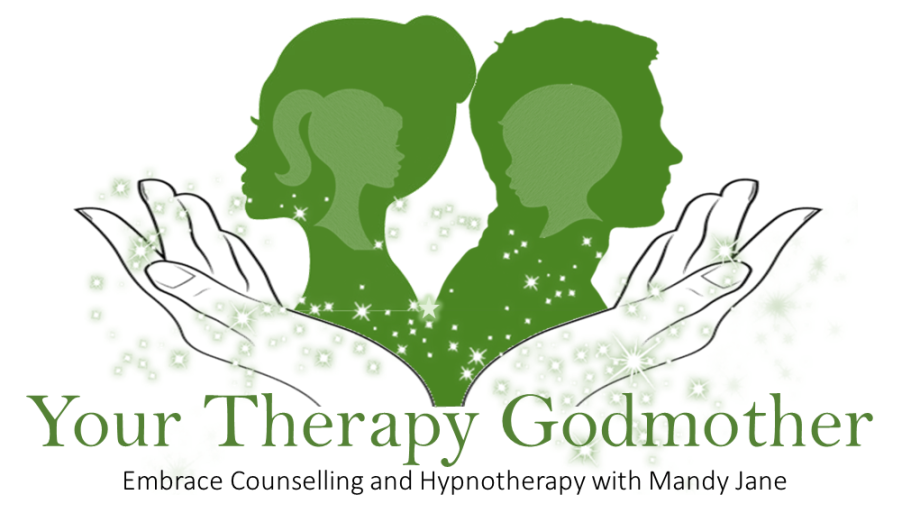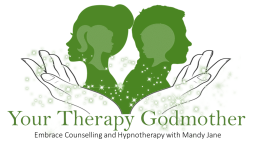Grounding and Journalling
Mandy Jane Lynch
Your Therapy Godmother - Counsellor / Coach / Hypnotherapist
Grounding and Journalling
Grounding Techniques to Try
Try different grounding techniques until you find a few or a combination that works for you.
Practice them over and over, preferably before you need to use them.
The more you practice, the easier it'll be to remember how to ground yourself when the time comes.
It's also good to practice using your grounding exercises right away when you start to feel anxious, distressed, impulsive, or panicky before your emotions get the best of you.
Heart Breathing Exercise:
- Close your eyes and relax into your chair or bed
- Put your hand over your heart and focus your attention into that area, into those deep chambers in the centre of your chest.
- Breathe deeply but normally and feel as if you breath is coming in and out of your heart area.
- Begin to regulate your breathing to a count of six.
- Breathe for a count of six seconds into your heart space.
- Breathe for a count of six seconds out of your heart space.
- Keep breathing in for six and breathing out for six.
- Focus on your heart area and feel the relaxation.
Notice how relaxed you feel. It’s easy yet powerful and perfect for bringing down your levels of distress and anxiety.
4-7-8 Breathing Exercise:
- Breathe for 4 Seconds
- Hold Your Breathe for 7 Seconds
- Breathe Out Slowly for 8 Seconds
- Repeat at least three times.
This simple exercise activates the parasympathetic nervous system responsible for "rest and digest" which helps lower your heart rate and relax your internal organs.
Progressive Muscle Relaxation (PMR) for Anxiety
The methodical approach to increasing and releasing tension throughout your body. By systematically constricting and releasing various muscle groups it is possible to relieve physical stress and quiet and calm the mind. Here are the steps for one version of PMR that anyone can do. Try it next time you're feeling nervous, anxious, or find yourself tossing, turning, and unable to sleep.
- Step 1 - Get comfortable. You don't have to lie down to do PMR; it will work if you're sitting up in a chair. Do make sure you're in a place that's free of distraction. Close your eyes if that feels best for you.
- Step 2 - Breathe. Inhale deeply through your nose, feeling your abdomen rise as you fill your diaphragm with air. Then slowly exhale from your mouth, drawing your navel toward your spine. Repeat three to five times.
- Step 3 - Tighten and release your muscles, starting with your feet. Clench your toes and pressing your heels toward the ground. Squeeze tightly for a few breaths and then release. Now flex your feet in, pointing your toes up towards your head. Hold for a few seconds and then release.
- Step 4 - Continue to work your way up to your body, tightening and releasing each muscle group. Work your way up in this order: legs, glutes, abdomen, back, hands, arms, shoulders, neck, and face. Try to tighten each muscle group for a few breaths and then slowly release. Repeat any areas that feel especially stiff.
- Step 5 - Take a few more deep breaths, noting how much more calm and relaxed you feel.
Stop and Pause Anxiety Technique
- Stop! - Don't react immediately. Pause.
- Observe - What is happening, what am I responding to?
- Pull Back & Put Some Perspective - Fact or opinion? What's the bigger picture? What would someone else make of this? Is there another way of looking at it? What would I say to a friend?
- Practice What Works - Play to your Principles - What will help most? What's the best thing to do for me, for others, for this situation?
- Practice STOPP! as much and as often as you can - the more you practice, the easier it will be when you need it!
Grounding With Your Five Senses:
- What 5 things Can You See - e.g. sun, picture on the wall, people walking etc
- What 4 Things Can You Feel - e.g. wind blowing, feet on the floor, pencil in hand etc
- What 3 Things Can You Hear - e.g. bird chirping, car horn, clock ticking etc
- What 2 Things Can You Smell - e.g. Food from cafe, fresh cut grass, perfume etc
- What 1 Thing Can You Taste - e.g. Mint, breakfast, toothpaste etc
Emotional Freedom Technique (EFT)
I would recommend downloading The Tapping Solution App to find out about using the Emotional Freedom Technique (EFT) which is a tapping technique that brings down levels of high emotions.
EFT can also be used with children to help them to learn how to ground themselves or you can use it if you are hugging them after they have become distressed e.g. take your index and middle finger place them either side of your child’s spine and continue gently tapping them down the spine from the neck to their lower part of their body to help calm them down. Click here to go to the Matrix Reimprinting page which has a leaflet showing how to do the EFT Tapping Technique.
Audio Exercises:
In fact, these exercises can be particularly useful for times when you're in public, as no one will even know what you are doing. You can then stop the exercise whenever you're feeling reconnected to the current moment. Other visual and auditory grounding exercises you can try include:
- Sing or hum your favourite song.
- Read your favourite poem, children's book, or song lyrics out loud.
- Call someone.
- Whisper or say out loud, "I am safe," or "I am calm," or whatever emotion you are trying to capture. Repeat it until you feel grounded.
- Put on a funny YouTube video or watch an episode of your favourite sitcom. Or watch a scary movie.
- Find an app that plays nature sounds ahead of time. Pick your favourite one and play it when you need grounding.
Tactile Exercises
Tactile grounding exercises use your sense of touch to ground you. One commonly used tactile grounding exercise is to grab an ice cube out of the freezer and hold it in your hand until it starts to cause some mild discomfort. Don't hold onto it for too long or it can cause pain. Many people find that the discomfort helps them reconnect with the current time. Here are some other examples of tactile grounding exercises to try:
- Take a cool shower or run your hands under cool water. Or do the opposite and take a hot bubble bath.
- Snap a rubber band gently on your wrist.
- Rub some scented lotion on your hands, focusing on the way it feels and smells as you work it into your skin.
- Use a water mister to spray your face and/or chest.
- Pick a hand and tap each finger with your thumb, starting with your index finger and continuing down. Go back and forth until you feel grounded.
- Keep a bead, pebble, stress ball, a small piece of cloth, or another object of your choice in your pocket and roll it around in your hand(s) when you need to get grounded. You can also use a bracelet or necklace.
- Run your hand slowly and gently over the carpet or the fabric of a piece of furniture or clothing and notice how it feels when you rub it in one direction versus the other.
- Put a piece of chocolate in your mouth. Experience the texture, flavour, and feel as it slowly melts.
- Stretch your arms up over your head as high as you can, then out to your sides, finally pulling your elbows back as far as you can behind your back. Repeat. Think about your muscles flexing and feel their strength.
- Hug your favourite stuffed animal, a comfy blanket, or a pillow.
- Take off your shoes and push your toes into the floor or ground.
Other Exercises
If none of the above work for you, be creative and make up your own grounding exercises. Coming up with your own may be especially helpful since only you know what will work best for your situation. What senses are most powerful for you? Smell? Taste? Touch? Might a combination of exercises work best, like putting on your favourite song while you stretch your muscles? Here are more techniques to try or that you can use as a springboard to come up with your own twist:
- Take a whiff of peppermint from a bottle of essential oil or very strong mints.
- Bite into a lemon or take a sip of lemon juice.
- Find something in the room that starts with A, then B, then C, and so on.
- Count backward from 100.
- Put on your favourite song and really concentrate on the words, the music, and the way it all makes you feel.
- Write how you're feeling in a journal that's designated for grounding and use your favourite pen. Notice how the pen feels in your hand and the smoothness of how it writes on the paper.
- Play a game on your phone or computer.
- Breathe in through your nose slowly and deeply until your lungs are full. Slowly exhale through your mouth until your lungs are empty. Repeat, concentrating on the feeling of your lungs expanding and contracting.
- Pull a mental picture into your mind of your favourite place and imagine you're there. Think about what you'd be doing if you were really there.
- Go outside and smell the air or the flowers, trees, or leaves.
- Jump up and down.

©Copyright. All rights reserved 2023 - Embrace Counselling and Hypnotherapy with Mandy Jane

